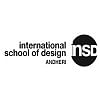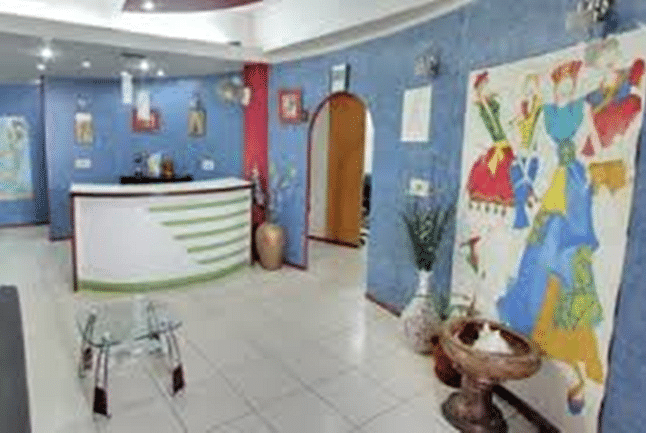MBA in Interior Designing Syllabus and Subjects

The MBA in Interior Designing Syllabus is designed to provide a comprehensive combination of business management acumen with specialized knowledge of interior design and spatial planning. The MBA in Interior Designing syllabus includes core and elective subjects that are offered over 4 semesters. MBA in Interior Designing is a postgraduate degree based on management principles of Operations, Strategy, and Marketing with a focus on independent or corporate job roles in the Interior Designing space.
The MBA in Interior Designing syllabus explains the mechanism behind managing functions around an Interior Design business, with different theoretical concepts and practicals to inculcate learning, like Managerial Principles, Design and Drawing, Interior Space Planning, Construction Materials, Customer Relationship Management, etc.
Table of Contents
Semester-Wise MBA in Interior Designing Syllabus
MBA Interior Designing Syllabus consists of the various management principles surrounding an Interior Design business, and how these principles can be applied to maintain the various functions. The semester-wise MBA in Interior Designing syllabus has been mentioned below:
MBA in Interior Designing First-Year Syllabus
The major management concepts and theories are introduced in the first year of the MBA in Interior Designing syllabus through core and elective subjects. Core subjects are consistent throughout different MBA courses and colleges, but elective subjects vary depending on students’ choices. The MBA in Interior Designing subjects for 1st year contains the following topics:
|
Semester I |
Semester II |
|
Organisational Behaviour |
Human Resource Management |
|
Accounting for Managers |
Financial Management |
|
Managerial Economics |
Bumastics |
|
Marketing Management |
Strategic Management |
|
Business Environment & Corporate Governance |
Operations Management |
|
Business Communication |
CAD & Visualisation - I |
|
History of Architecture |
Design & Space Planning - I |
|
Interior Services (Elective I) |
|
|
Advertising & Co-creation (Elective II) |
MBA in Interior Designing Practical Subjects for 1st Year
- Intro to Design & Drawing
- Computer-Aided Interior Design (CAD & Visualisation - I)
- Management Information Systems
MBA in Interior Designing Second Year Syllabus
MBA in Interior Designing subjects for the second year provides a more detailed and specialized set of skills and knowledge of the design industry. MBA in Interior Designing syllabus gives insights into the various considerations taken for materials, space, layout, and other related aspects in a commercial or residential space.
The MBA Interior Designing subjects in the second-year syllabus are listed below:
|
Semester III |
Semester IV |
|
Entrepreneurship Development |
Construction Detailing |
|
Interior Landscape |
Design & Space Planning - II |
|
Estimation & Costing in Interior Design |
Total Quality Management |
|
CAD & Visualisation - II |
Interior Project Management |
|
Construction Materials |
Professional Practices (Elective) |
|
Furniture Design & Detailing (Elective) |
Portfolio Presentation |
|
- |
Thesis |
MBA in Interior Designing Practical Subjects for 2nd Year
- CAD & Visualisation - II
- Design Studio
MBA in Interior Designing Subjects
MBA Interior Designing Subjects are inculcated into the syllabus with foundational management knowledge to sustain design businesses in the industry. The MBA in Interior Designing Syllabus pushes students to succeed as proficient and bankable stakeholders in the industry.
MBA in Interior Designing subjects are of two types - core subjects which are foundational subjects, and elective subjects which are course-specific specialised topics. The MBA Interior Designing syllabus boasts of industry-relevant subjects such as Managerial Principles, Managerial Economics, Estimation and Costing in Interior Design, Total Quality Management, Interior Services, Construction Detailing, etc. Some of the important core and elective subjects for the MBA in Interior Designing syllabus are as follows:
MBA in Interior Designing Core Subjects
Listed below are the management-based core subjects an MBA in Interior Designing offers for students:
- Business Environment & Corporate Governance
- Customer Relationship Management
- Bumastics
- Interior Space Planning
- Construction Detailing
- Service Marketing
- Estimation & Costing in Interior Design
- Financial Management
- History of Architecture
- Computer-Aided Interior Design
MBA in Interior Designing Elective Subjects
MBA in Interior Designing syllabus provides elective subjects that are chosen based on a student’s liking and career goals. These elective subjects are a great source of specialized information and advance career goals for niche job roles:
- Entrepreneurship Development
- Construction Materials
- Interior Services
- Professional Practices
- Furniture Design & Detailing
- Advertising & Co-creation
MBA in Interior Designing Subjects in Detail
With the diversifying needs of consumers for sustainability and eco-friendliness, the MBA in Interior Designing syllabus has included several techniques to manage these expectations. The below-showcased subjects and their corresponding topics will provide an idea of what the course entails:
|
Subjects |
Topics Covered |
|
History of Architecture |
History of Design, Monuments 20th century, Institutions, Architecture of US, France, Germany, etc. |
|
Marketing Management |
Customer Value and Satisfaction, Management Principles, Market Research, Product Diffusion, Hard and Soft Standards, Dealing with the competition, etc. |
|
Interior Space Planning |
Space Development, Construction Documents, Space Development in Residences, Commercial Buildings and Institutions, etc. |
|
Construction Detailing |
Construction of Arches, Doors, Windows, False Ceilings, etc. |
|
Computer-Aided Interior Design |
Fundamentals of CAD, Basic Drawing, Advanced Object Creation, Advanced Feature Creation, etc. |
|
Bumastics |
Statistics, Dispersion, Probability Distribution, Time-series Analysis, etc. |
|
Estimation & Costing in Interior Design |
Const influences, Construction Costs, Specifications for Civil Work, Rate Analysis, etc. |
|
Furniture Design & Detailing |
Furniture Categories, Functional and Formal, Seating Designs, Storage Systems, Lighting Concepts, etc. |
|
Business Environment & Corporate Governance |
Micro and Macro Environment, India's Economy and Business Scope, Private and Public Partnership, Monetary and Fiscal Policy, Global Environment, etc. |
|
Construction Materials |
Stone & Masonry, Cement & Mortar Applications, Ferrous & non-ferrous materials, Timber & its application, Glass, Paints, etc. |
College-wise MBA in Interior Designing Syllabus
While core subjects may be constant, elective subjects differ from one college to another. The structure and learning methods may also vary across colleges. If in need, students can download the MBA in Interior Designing Syllabus PDF 2023 from official college websites. The syllabus for an MBA in Interior Designing for top colleges is tabulated below:
Mysore University MBA in Interior Designing Syllabus
Mysore University has inculcated an exhaustive course structure for MBA in Interior Designing with specialized subjects. Listed below are semester-wise MBA in Fashion Management subjects for Mysore University:
|
MBA in Interior Designing 1st Sem Subjects |
MBA in Interior Designing 2nd Sem Subjects |
|
Management And Organisation Behavior |
Human Resource Management |
|
Managerial Economics |
Financial Management |
|
Accounting For Managers |
Management Information System |
|
Marketing Management |
Business Research Methods |
|
Business Environment And Corporate Governance |
Quantitative Methods |
|
Managerial Communication |
Interior Designing And Business Law |
|
Introduction To Design And Drawing (Practical) |
Computer-Aided Interior Design (Practical) |
|
MBA in Interior Designing 3rd sem Subjects |
MBA in Interior Designing 4th sem Subjects |
|
Entrepreneurship Development |
Total Quality Management |
|
Operation Research |
Service Marketing |
|
Customer Relationship Management |
Estimation And Costing In Interior Design |
|
Construction Materials |
Professional Practice In Construction Management |
|
Construction Detailing |
Project Report |
|
Interior Space Planning |
– |
|
Interior Services |
– |
INSD MBA in Interior Designing Syllabus
MBA in Interior Designing offered by INSD offers a holistic understanding of the latest interior designing concepts, tools, and processes along with establishing essential business management principles. The MBA in Interior Designing syllabus offered by INSD is detailed in the table below:
|
MBA in Interior Designing 1st Sem Subjects |
MBA in Interior Designing 2nd Sem Subjects |
|
Advance Construction |
Business Environment and Law |
|
Graphic Communication and Signage |
Urban Design and Planning |
|
Management Process and Behaviour |
Furniture Design Studio |
|
Building Services Detailed and Sequence of Activities |
Furniture Periodic Styles |
|
Studio - 1 |
Specifications and Valuation |
|
General Proposal and Development of Project |
Studio - 2 |
|
Basics of Drafting |
Autocad |
|
Basics of Graphics |
Sketchup |
|
Materials |
Management and Organisational Behaviour |
|
Inspiration and Style on Trend Forecasting |
Brand Development and Management |
|
Interior Business Analysis - Part 1 |
|
MBA in Interior Designing 3rd sem Subjects |
MBA in Interior Designing 4th sem Subjects |
|
Human Resource Management |
Entrepreneurship Development |
|
Theory of Aesthetic and Space Description |
Quantity and Cost Estimation |
|
Analysis and Application of Multi-View and Objective |
Ancient to Modern Period Designer Portfolio |
|
Technical Analysis of Style and Properties of Era |
Method of Construction in Ancient and Modern Concepts |
|
Modern Exterior and Interior Architecture |
Product Development |
|
Studio - 3 |
Industrial Skill Project |
|
3DS Max |
Revit |
|
Consumer Behaviour |
Exhibit Design |
|
Retail Store Design |
Sales Management |
|
Visual Merchandising and Display |
Project Management |
|
Interior Business Analysis- Part 2 |
MBA in Interior Designing Projects
MBA in Interior Designing syllabus may have requirements for a final research project, the scope for which is exponential. Research products can be conducted on trending topics such as Designs for the Specially Abled, Sustainability Methods, etc. Students feel motivated to demonstrate their practical skills through research projects and gain industry-relevant exposure. Some of the popular topics of research used in the Design space with regard to Interiors and Spatial Planning:
- Designing for a Geriatric Population
- Sustainability Designs for Small Homes in Urban Areas
- Importance of Good Lighting
- Interior Space Planning for Mental Health Scenarios
MBA in Interior Designing Course Structure
The focus of an MBA in Interior Designing course is on the combo of business processes in the design industry. The subjects taught in the MBA in Interior Designing are disseminated over 2 years and 4 semesters. The course structure for the MBA in Interior Designing syllabus is as follows:
- IV Semesters
- Core Subjects
- Elective Subjects
- Practical Subjects
- Internship + Research Project
MBA in Interior Designing Teaching Methodology and Techniques
Different subjects may require different techniques of teaching. Depending on the course subjects, teaching methodology may range from a theoretical approach to a more practical one. It is most common that colleges offering an MBA in Interior Designing require either furnishing a dissertation based on a research project or a Viva Voce round. Here are some important teaching techniques used in the MBA Interior Designing syllabus:
- Traditional Classroom-Based Teaching
- Seminars
- Case Studies
- Lab Courses
- Internships + Research Projects
MBA in Interior Designing Books
MBA in Interior Designing course books elucidate and expand on management theories and how to apply these in the Interior Designing Industry. The following coursebooks are not only a credible source of principles and knowledge, and they also provide a comprehensive insight into teaching Interior Designing practices.
Some popular course books for the MBA in Interior Designing syllabus are shown below:
|
Subjects |
Book Name |
Authors |
|
Construction Materials |
Building Construction |
Sushil Kumar |
|
Customer Relationship Management |
Customer relationship management concept & cases |
Alok Kumar Rai |
|
Interior Space Planning |
Interior Design Principles and Practice |
M. Prathpa Rao |
|
Construction Materials |
Building Construction: Planning Techniques and Methods of Construction |
S.P. Bindra & S.P. Arora |
|
CAD |
Computer-Aided Engineering Drawing |
K. R. Gopalkrishna |
|
Estimation & Costing |
Estimation and costing |
B. N. Datta, |
|
Business Environment & Corporate Governance |
Economic Environment of Business |
S. K. Misra & V. K. Puri |
|
Intro to Design & Drawing |
Time-saver Standards for Architectural Design Data |
M.C. McGraw |
|
Financial Management |
Financial Management |
R. K. Sharma and Shashi K. Gupta, |
|
Bumastics |
Business Statistics |
J. K. Sharma |
|
Entrepreneurship Development |
Growing And Managing a Small Business An Entrepreneurial Perspective |
Kathleen R. Allen |
Top MBA in Interior Designing Colleges
Top Management Entrance Exams
MBA in Interior Designing Fee Structure
FAQs on MBA in Interior Designing Syllabus and Subjects
Q: How many subjects are there in MBA in Interior Designing?
Q: What are the subjects in the MBA in Interior Designing syllabus?
Q: What are some of the practical subjects in MBA in Interior Designing?
Q: What are some of the coursebooks for preparing for MBA in Interior Designing?
Q: What subjects do you need for an MBA in Interior Design?




















